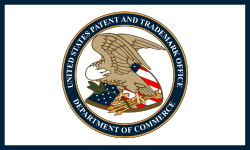A ‘utility’ patent is different from a ‘design’ patent. A ‘utility’ patent is directed to how something works – for example, how a mousetrap catches mice. A ‘design’ patent addresses the decorative appearance of something – for example, a mousetrap that looks like a piece of cheese. Utility and design patents differ in their scope, value, application, and interpretation.
For many years, only ‘patent attorneys’ or ‘patent agents’ (collectively ‘patent practitioners’) having particular qualifications and credentials have been able to represent others in applying for and obtaining both utility patents and design patents. Those patent practitioners, of whom your faithful correspondent is one, have a degree in science or engineering and studied for and passed a rigorous USPTO examination, testing their knowledge of patent legal practice and procedure. In preparing and prosecuting utility patent applications, patent attorneys or patent agents may be called on to understand mechanical, biological, chemical, or electrical systems at the cutting edge of technology.
But a design patent is different from a utility patent. An engineering or science degree and the ability to understand mechanical, biological, chemical, or electrical systems are not needed to understand an ornamental design. Recognizing that fact, the US Patent and Trademark Office has decided to open up who can file, prosecute, and defend design patents and patent applications.
The USPTO is creating new categories of ‘design patent attorneys’ and ‘design patent agents’ to represent others specifically relating to design patents and design patent applications. The new design patent practitioners are not required to have science or engineering degrees. Instead, the design patent practitioner must have a degree in industrial design, product design, architecture, applied arts, graphic design, fine/studio arts, art teacher instruction, or equivalent. The design patent practitioner also must pass an examination, but without the science and technology.
Among the stated goals of the change are cheaper design patents, improved practitioner quality, providing opportunities for designers, and allowing more under-represented groups access to professions. Another goal, unstated but suggested, is providing a career path for USPTO design patent examiners, who have qualifications aligned with the new program. The new program goes into effect January 2, 2024.
We certainly can expect an explosion of providers offering design patent services in the very near future. How that affects inventors’ ability to protect their inventions remains to be seen.
— Robert Yarbrough, Esq.


